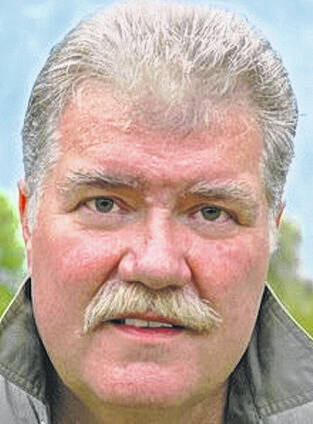
By James McGuire
Contributing columnist
April is already a week old!
The first full month of spring is well underway, in countless moments and details. Everywhere the vernal season can be seen diligently working its ancient magic on the landscape and its creatures.
Our days grow longer, and despite temporary weather hiccups and backtracks, progressively warmer. Ignore those recent snowflakes, we’re heading in the right direction!
I’ve always viewed Daylight Savings Time as a silly pretense, a bothersome affectation of self-delusion. Messing about with our clocks and watches doesn’t add even a single nanosecond of daylight to our allotment…but planet earth’s axial tilt does!
While earth’s tilt doesn’t add more time to a day that’s set by earth’s rate of spin—one complete revolution every 24 hours—the fact of this tilt does regulate the comings and goings of our seasons, as well as the amount of daylight each day receives.
Currently, our planetary tilt measures about 23.4 degrees. During the period between March’s vernal equinox and September’s autumnal equinox, earth’s Northern Hemisphere is tilted towards the sun so every day within that span will receive more than 12 hours of daylight.
At April’s start, we’d only gained a bit over three-and-a-half hours of daylight since the year began. But by the time April ends, we’ll add an additional hour and twenty minutes to that burgeoning tally!
Not more actual time, of course, but more time in a practical, usable sense. For me, that means more time to spend outdoors enjoying spring.
Spring is the time of rewakening, resurrection, and renewal. Its onset signs are many.
Migrated birds have returned. Their songs fill the air, along with those of birds who’ve spent their winter locally. Once again the procreative business of establishing territories, finding a mate, building nests, laying eggs, and starting a family occupies their time.
Buds swell. Grass turns green. Flowers bloom — hepatica and toothwort, bloodroot and bluebells and bluets, spring beauty, trout lily, foamflower, trillium. And I’ve barely begun the list! In woods and fields, a wealth of native and naturalized wildflowers dazzle like scattered jewels.
But when it comes to wildflower blooms currently visible, none are more ubiquitous than those of lesser celandine. The ground-hugging plants with bright yellow flowers and shiny green leaves are everywhere.
Some folks mistake them for buttercups. While lesser celandine and buttercups are members of the same family, and though both do have similar-looking yellow blossoms, buttercups tend to grow in more restricted clumps. Lesser celandine spreads thickly all over, like a low-growing ground cover.
Lesser celandine is particularly fond of stream corridors. Banks along the Stillwater, Great Miami, Greenville Creek, and every other river, creek, brook, and rill are presently blanketed in their yellow booms. As are many side yards, front yards, and backyards, including mine!
Lesser celandine, Ranunculus ficaria, prefers damp glades and wooded floodplains. The same locations where you’ll find a host of other favorite Buckeye wildflowers.
The genus name, Ranunculus, means little frogs and refers to this moist habitat preference. The species name, ficaria, reflects the way the roots form tiny tubers which resemble a cluster of miniature figs. This gives rise to one of the plant’s old names, figwort.
A native of Europe, Western Asia, and North Africa, lesser celandine was a long-favored ornament so popular that an English plant catalog from 1792 listed 800 cultivars.
Like countless other alien species accidentally or intentionally introduced into the United States, lesser celandine faced no natural checks to counteract its proliferation. Escaped plants quickly began spreading and spreading and spreading. Several states now classify lesser celandine as invasive because its early seasonal emergence and dense growth tendencies can smother out many of our native spring ephemerals.
However, since lesser celandine reproduces by seed, tubers, and bulbils small bulblike structures located on the base of the stem near the heart-shaped, blunt-toothed leaves controlling this lovely but aggressive invader is probably impossible.
Every spring, when the lesser celandine turns our stream banks gold, I inevitably think of William Wordsworth.
I suppose this personal peculiarity bears explaining since daffodils would more likely be the flower most would associate with the old poet. After all, Wordsworth’s most famous piece often counted as one of the greatest poems ever written is a work intertwined around memories of an encountered multitude of daffodils.
Nowadays, you’d be hard-pressed to find any book or article that doesn’t quote a line or two from this classic poem somewhere within its paragraphs.
But the truth is, lesser Celandine not daffodils was Wordsworth’s favorite flower. He wrote several poems about them and even requested their image be carved on his gravestone—except the stonemasons botched the job and instead carved an image greater celandine, a member of the poppy family.
Thus lesser celandine’s visual connection to one of literature’s most famous authors was lost. A pity, since the plant could probably use the favorable press of a high-profile champion.
Reach the writer at [email protected]


